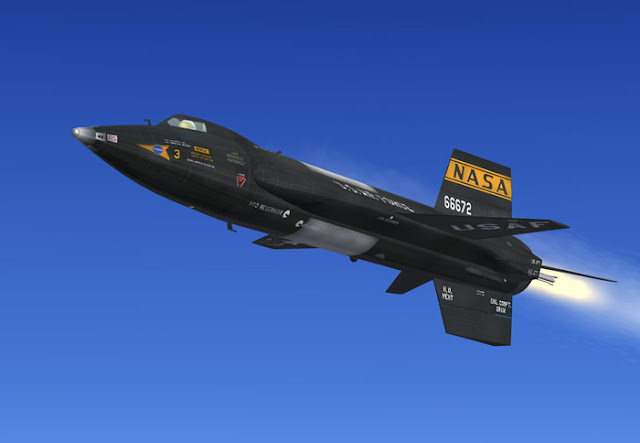WORLD SPEED RECORD FOR VEHICLES
 |
| THRUST SSC |
The
World Motor Sport Council homologated the new world land speed records
set by the team ThrustSSC of Richard Noble, driver Andy Green, on 15
October 1997 at Black Rock Desert, Nevada (USA). This is the first time
in history that a land vehicle has exceeded the speed of sound. The new
records are as follows:
Speed mile 1227.986 km/h (763.035 mph)
Speed kilometre 1223.657 km/h (760.343 mph)
Speed kilometre 1223.657 km/h (760.343 mph)
Engine Two Rolls-Royce Spey turbofan
Initially Rolls-Royce Spey 202
Finally Rolls-Royce Spey 205
Length 16.5 m (54 ft)
Width 3.7 m (12 ft)
Curb weight 10.5 tonnes
Initially Rolls-Royce Spey 202
Finally Rolls-Royce Spey 205
Length 16.5 m (54 ft)
Width 3.7 m (12 ft)
Curb weight 10.5 tonnes
AIR SPEED RECORD AIRCARFT
 |
| X-15 A |
The
X-15 was based on a concept study from Walter Dornberger for the NACA
for a hypersonic research aircraft.[4] The requests for proposal were
published on 30 December 1954 for the airframe and on 4 February 1955
for the rocket engine. The X-15 was built by two manufacturers: North
American Aviation was contracted for the airframe in November 1955, and
Reaction Motors was contracted for building the engines in 1956.
The X-15A reached a maximum speed of 7,274 km/hr (4,520 m.p.h., 2,021 m/sec) in October 1967, flown by William "Pete" Knight of the U.S. Air Force.
The X-15A reached a maximum speed of 7,274 km/hr (4,520 m.p.h., 2,021 m/sec) in October 1967, flown by William "Pete" Knight of the U.S. Air Force.
Engine XLR-99
Length 15.45 m (51 ft)
Width 6.8 m (22 ft)
Height 4.12 m (14 ft)
Height 4.12 m (14 ft)
Loaded weight 15,420 kg
Empty weight 6,620 kg
Empty weight 6,620 kg
WORLD SPEED RECORD FOR RAILED VEHICLES
 |
| JR-Maglev |
JR-Maglev,
or SCMaglev (Super-conducting Maglev) is a magnetic levitation train
system developed by the Central Japan Railway Company and Railway
Technical Research Institute (association of Japan Railways Group).The
JR-Maglev system uses an Electro-dynamic Suspension (EDS) system. The
maglev-trains have superconducting magnetic coils, and the guide ways
contain levitation coils. As the train moves, its moving magnetic fields
create a current in the levitation coils because of the magnetic field
induction effect. These currents create a magnetic field that interacts
with the magnetic field of the superconductive coils to create a force
that holds up and stabilises the train. On 2 December 2003, a three-car
train reached a maximum speed of 581 km/h (361 mph) (world speed record
for railed vehicles) in a manned vehicle run.:
Speed 581 km/h (361 mph)
Engine Linear Synchronous Motor (LSM)
WORLD RAIL SPEED RECORD
 |
| SNCF TGV |
Speed 574.8 km/h (357.2 mph)
Engine Asynchronous Motors 
Comments
Post a Comment